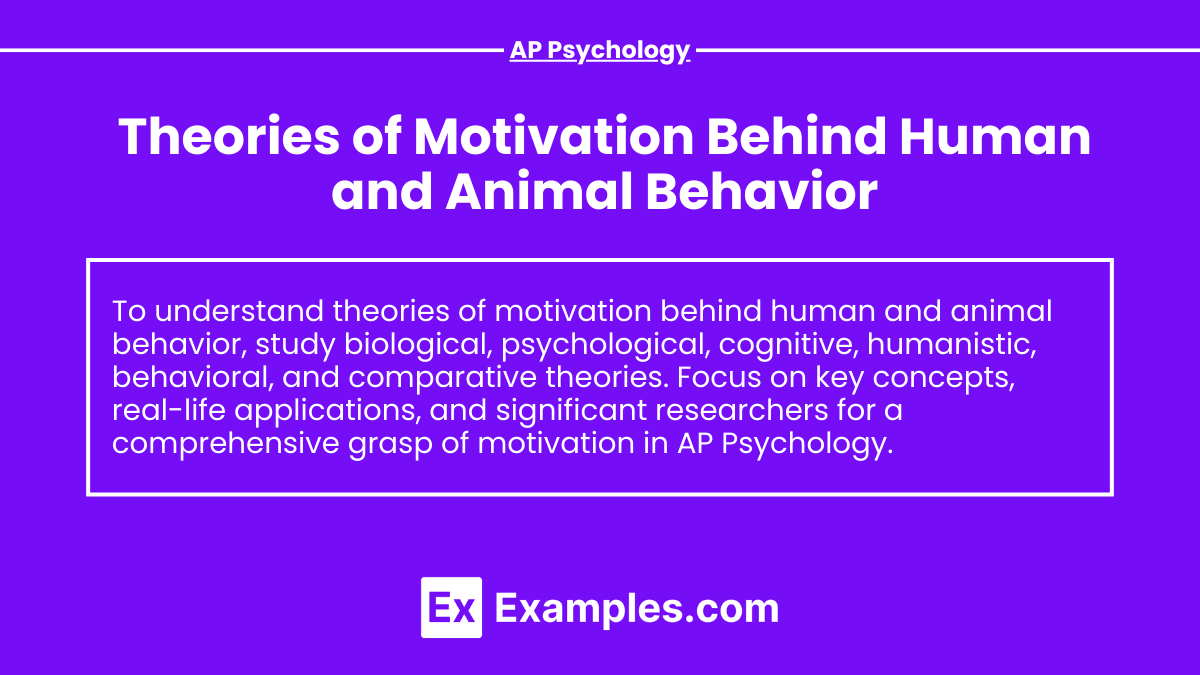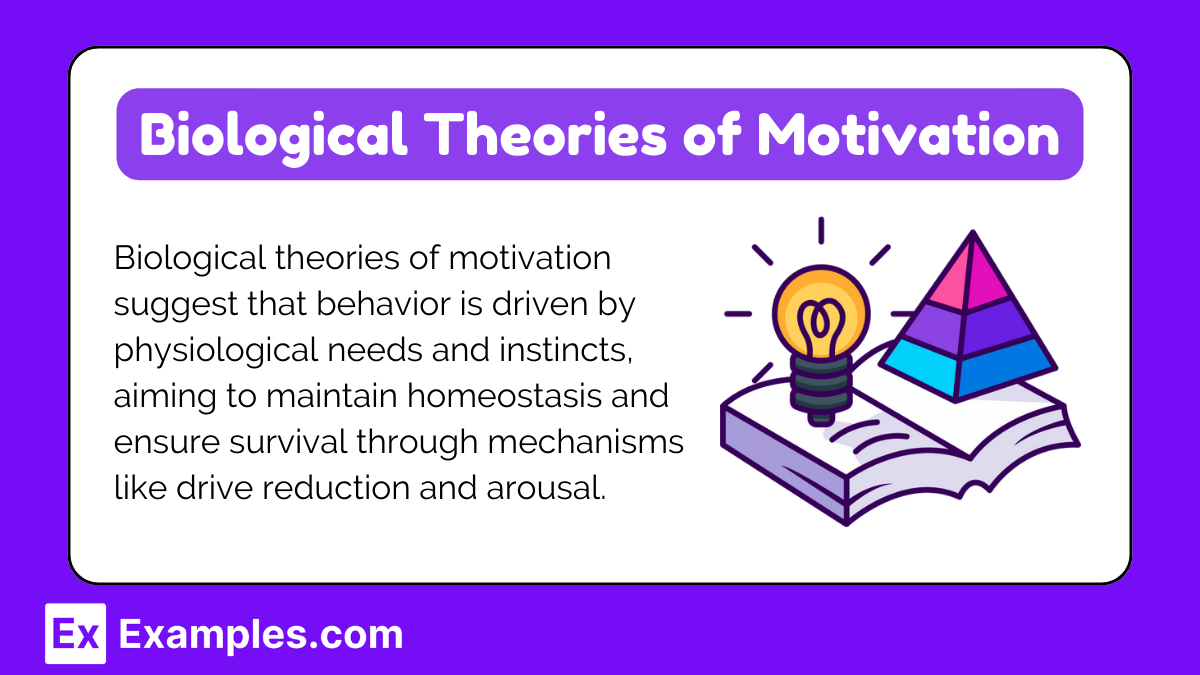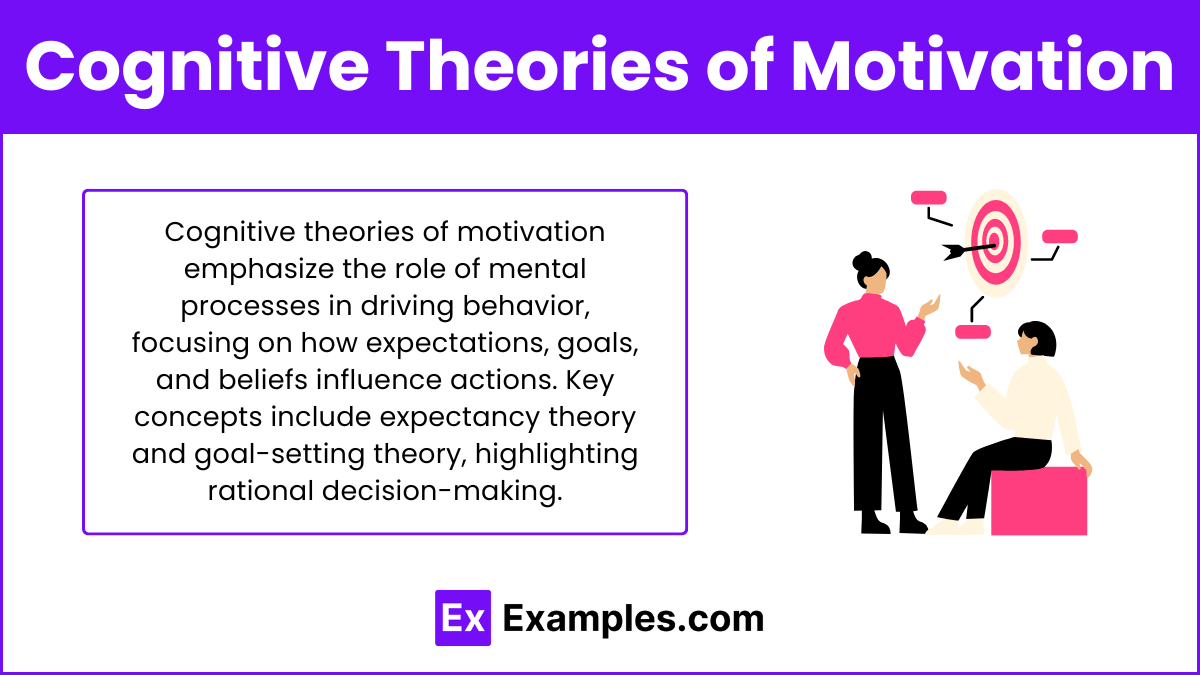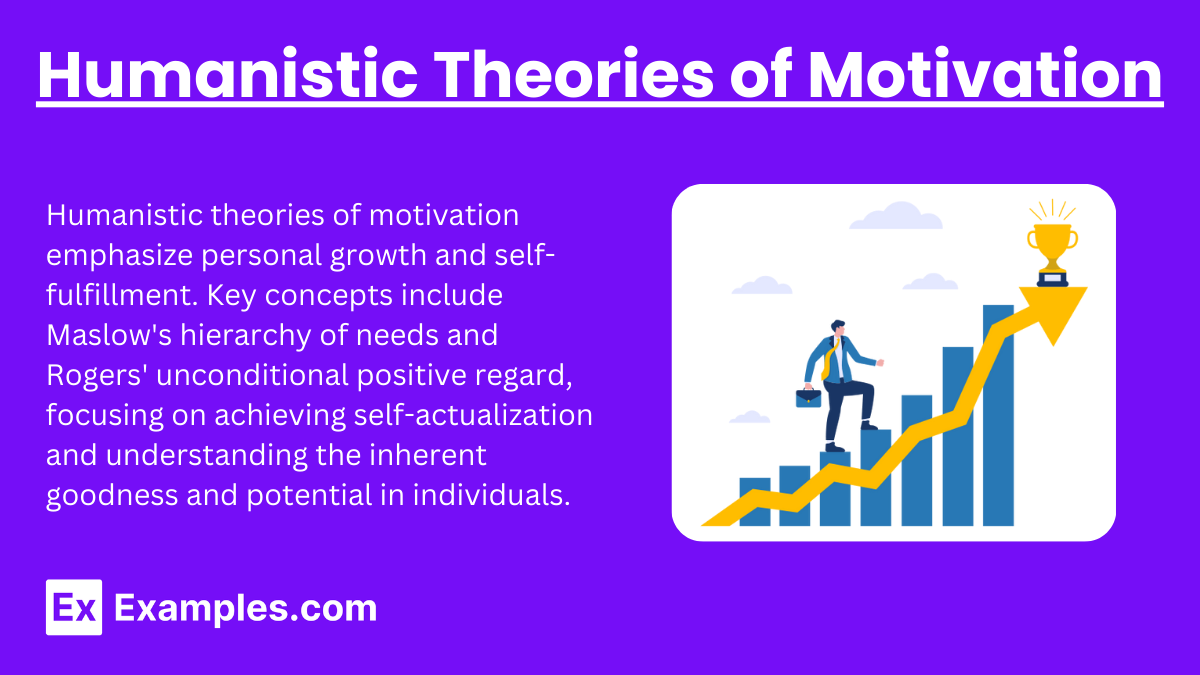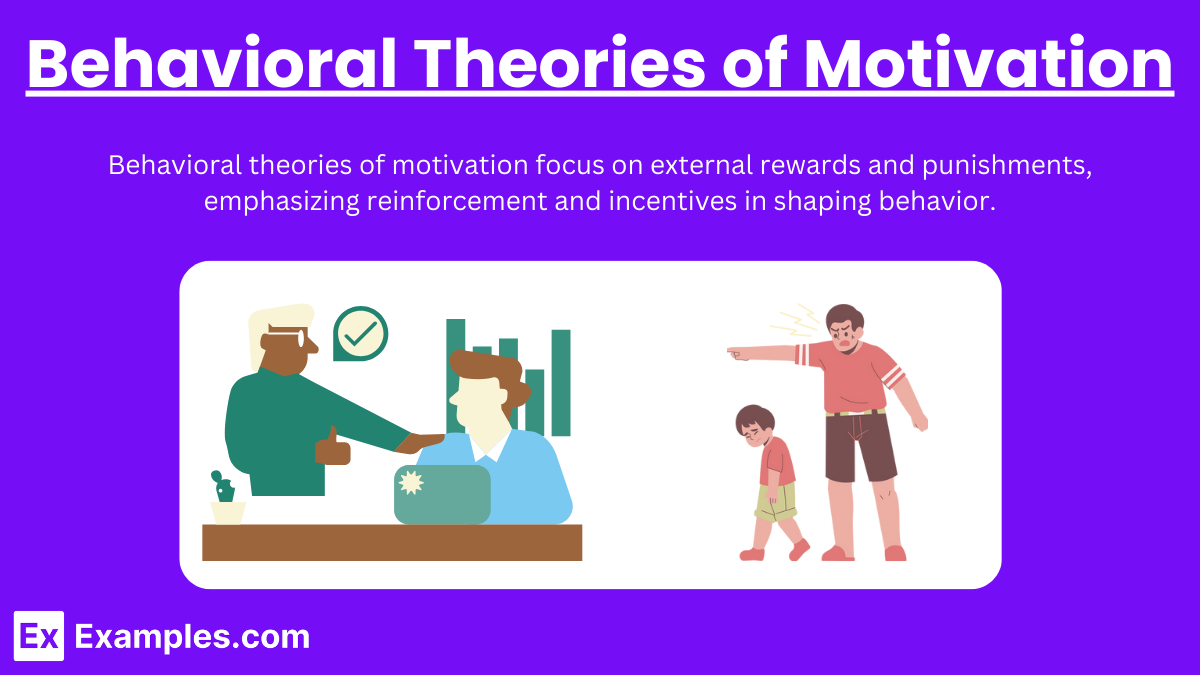Motivation drives the actions and behaviors of both humans and animals. In AP Psychology, understanding the theories of motivation is crucial for explaining why organisms engage in specific activities. These theories range from biological perspectives, like drive reduction and arousal theories, to psychological Theoretical Framework, such as Maslow's hierarchy of needs and self-determination theory. By exploring cognitive, humanistic, behavioral, and comparative approaches, students can grasp the diverse factors that influence motivation and behavior across species.
Learning Objectives
In studying the theories of motivation behind human and animal behavior, focus on understanding the key concepts and principles of biological, psychological, cognitive, humanistic, behavioral, and comparative theories. Learn how each theory explains the driving forces behind behavior, including intrinsic and extrinsic motivation, physiological needs, goal-setting, reinforcement, and evolutionary influences. Grasp the application of these theories to real-life scenarios and their significance in explaining complex behaviors. Aim to connect theoretical knowledge with practical examples.
1. Biological Theories of Motivation
Biological theories of motivation propose that behavior is driven by physiological needs and innate biological processes. These theories focus on how homeostasis, genetic predispositions, and neural mechanisms influence actions. Key concepts include drive reduction, which aims to balance internal states, and arousal theory, which seeks optimal arousal levels for functioning.
Drive Reduction Theory
Definition: This theory posits that physiological needs create an aroused state (a drive) that motivates an organism to satisfy the need.
Key Concepts:
Homeostasis: The organism's tendency to maintain a balanced internal state.
Primary Drives: Biological needs such as hunger, thirst, and sleep.
Secondary Drives: Learned drives, such as the desire for money or social approval, which are not directly related to biological needs.
Arousal Theory
Definition: This theory suggests that people are motivated to maintain an optimal level of arousal, which varies from person to person.
Key Concepts:
Yerkes-Dodson Law: Performance increases with arousal to a certain point, after which it decreases. This law illustrates the relationship between arousal levels and performance.
2. Psychological Theories of Motivation
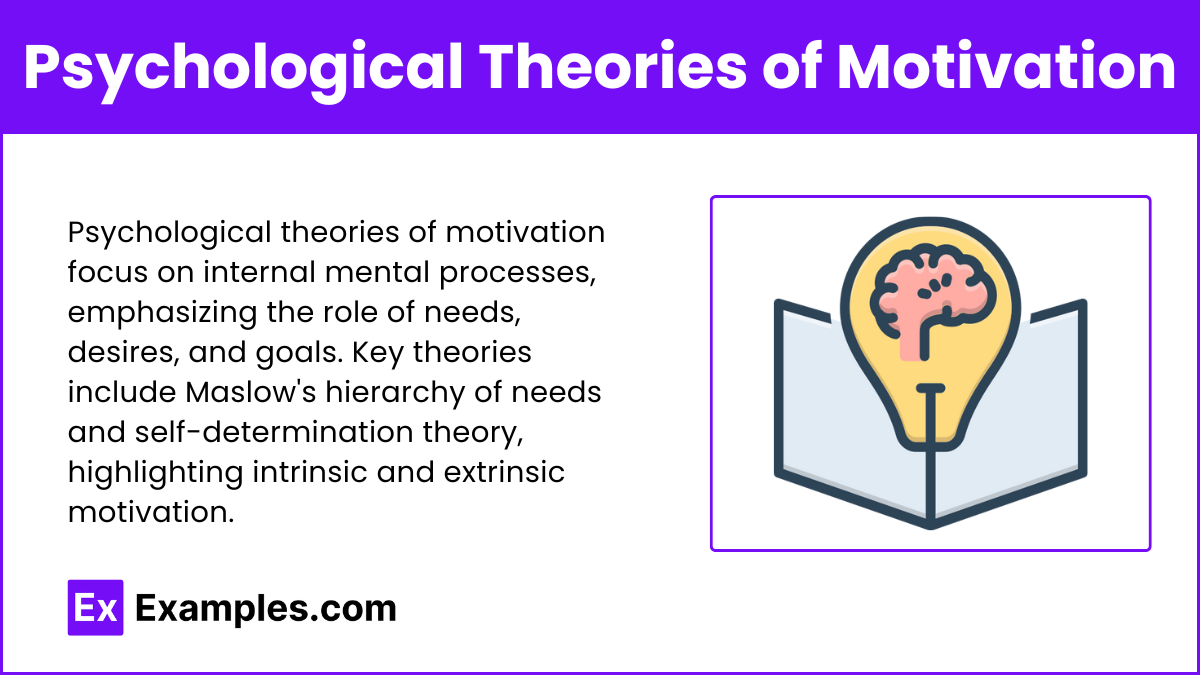
Psychological theories of motivation focus on internal mental states and processes that drive behavior. They explore how needs, desires, and goals influence actions. Key theories include Maslow's hierarchy of needs, emphasizing self-actualization, and self-determination theory, highlighting intrinsic and extrinsic motivation through autonomy, competence, and relatedness.
Maslow's Hierarchy of Needs
Definition: Abraham Maslow proposed that human needs are arranged in a hierarchy, from basic physiological needs to self-actualization.
Hierarchy Levels:
Physiological Needs: Food, water, warmth, rest.
Safety Needs: Security, safety.
Belongingness and Love Needs: Intimate relationships, friends.
Esteem Needs: Prestige, feeling of accomplishment.
Self-Actualization: Achieving one's potential, including creative activities, involves a state of adaptation.
Self-Determination Theory (SDT)
Definition: This theory emphasizes the role of intrinsic and extrinsic motivations in driving human behavior.
Key Concepts:
Intrinsic Motivation: Performing an activity for its inherent satisfaction.
Extrinsic Motivation: Performing an activity to achieve an outcome separate from the activity itself.
Basic Psychological Needs: Autonomy, competence, and relatedness are essential for fostering intrinsic motivation and psychological growth.
3. Cognitive Theories of Motivation
Cognitive theories of motivation emphasize the role of mental processes in directing behavior. They focus on how beliefs, expectations, and goals influence motivation. Key theories include expectancy theory, which highlights the impact of anticipated outcomes, and goal-setting theory, which stresses the importance of setting specific, achievable goals for motivation.
Expectancy Theory
Definition: This theory suggests that motivation is determined by a combination of expectancy, instrumentality, and valence.
Key Concepts:
Expectancy: The belief that one's effort will result in attainment of desired performance goals.
Instrumentality: The belief that performance will be rewarded.
Valence: The value an individual places on the rewards of an outcome.
Goal-Setting Theory
Definition: This theory emphasizes the importance of setting specific and challenging goals to enhance motivation and performance.
Key Concepts:
SMART Goals: Goals should be Specific, Measurable, Achievable, Relevant, and Time-bound.
Feedback: Regular feedback is essential for staying motivated and achieving goals.
4. Humanistic Theories of Motivation
Humanistic theories of motivation emphasize the inherent drive towards personal growth, self-fulfillment, and achieving one's potential. These theories highlight the importance of psychological needs, such as self-actualization and self-esteem, as proposed by Maslow's hierarchy of needs, and the value of unconditional positive regard in fostering a healthy self-concept.
Carl Rogers' Theory of Unconditional Positive Regard
Definition: Rogers emphasized the importance of unconditional positive regard from others, which helps individuals achieve self-actualization.
Key Concepts:
Unconditional Positive Regard: Acceptance and support of a person regardless of what they say or do.
Self-Concept: One's view of themselves and their abilities.
5. Behavioral Theories of Motivation
Behavioral theories of motivation focus on how external stimuli, rewards, and punishments shape behavior. They emphasize reinforcement principles, where positive reinforcement increases desired behaviors, and negative reinforcement or punishment decreases undesired behaviors. Key theories include operant conditioning, highlighting the role of incentives and consequences in motivating actions.
Incentive Theory
Definition: This theory posits that behavior is motivated by a desire for reinforcement or incentives.
Key Concepts:
Positive Reinforcement: Adding a rewarding stimulus to increase a behavior.
Negative Reinforcement: Removing an aversive stimulus to increase a behavior.
6. Comparative Theories of Motivation
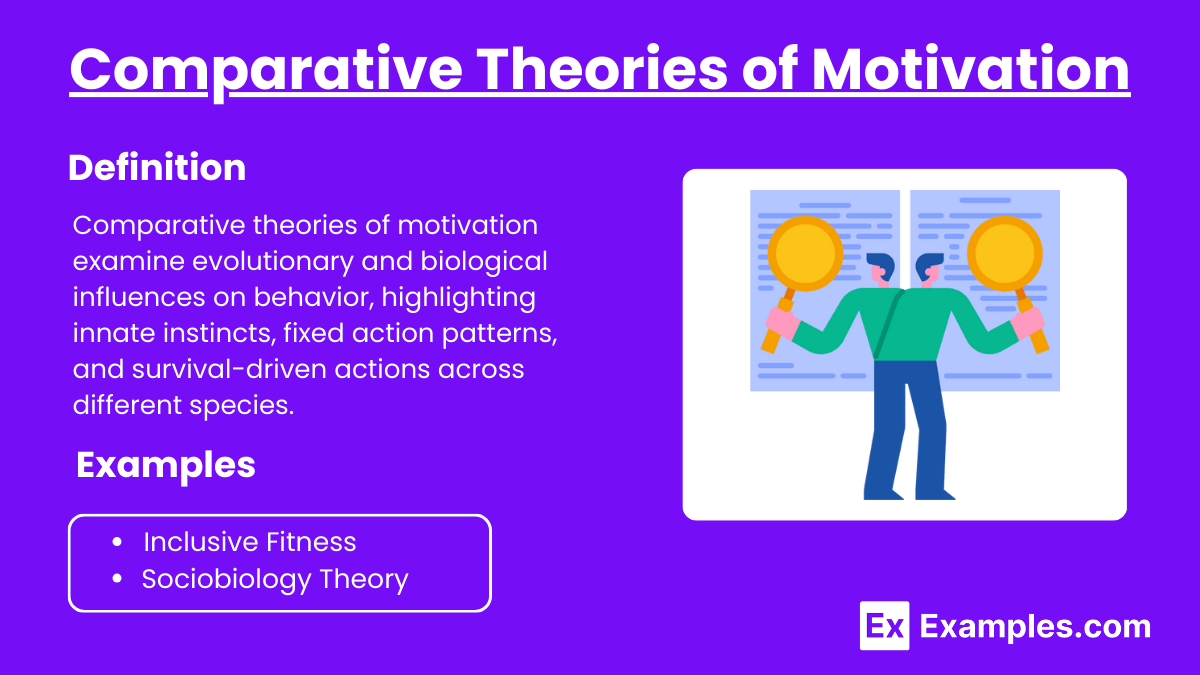
Comparative theories of motivation examine evolutionary and biological influences on behavior across species, highlighting innate instincts, survival mechanisms, and reproductive strategies. These theories explore how fixed action patterns, kin selection, and inclusive fitness drive behaviors, emphasizing the role of natural selection in shaping adaptive actions in various organisms.
Instinct Theory
Definition: This theory suggests that behaviors are driven by instincts, which are innate and consistent patterns of behavior.
Key Concepts:
Fixed Action Patterns: Pre-programmed responses to specific stimuli.
Sociobiology Theory
Definition: This theory combines evolutionary biology with social behavior, suggesting that behaviors have evolved to enhance survival and reproductive success.
Key Concepts:
Inclusive Fitness: The success of passing on genes through relatives as well as direct offspring.
Kin Selection: Behaviors that help relatives can increase an individual's genetic success.

